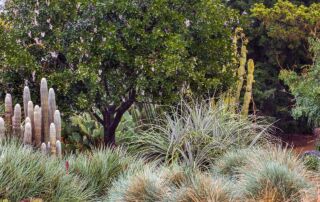The Chilean Puyas
Puyas (Puya species) typically are described as native to the Andes Mountains of South America and for the most part this is true. Almost all of the 200-plus species of spiny-leaved, rosette-forming puyas are found in moist to dry habitats at mid- to high elevations of the South American Andes. Puyas blend well with the textures and colors of many other summer-dry plants. Two puyas are native to the wet mountains of Costa Rica and the distribution of several others extends eastward into the rainforests of Brazil. Seven puyas are native primarily to low elevations of central



